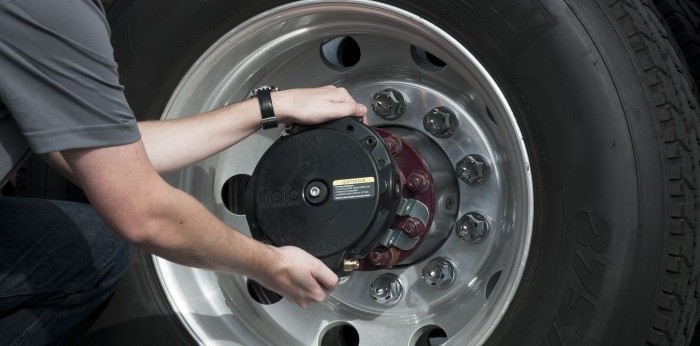 Improving fuel economy and reducing maintenance, along with weight savings to help boost hauling capacity, remain the focus of axle and suspension system design initiatives. In particular, 6×2 configurations can address these needs.
Improving fuel economy and reducing maintenance, along with weight savings to help boost hauling capacity, remain the focus of axle and suspension system design initiatives. In particular, 6×2 configurations can address these needs.
Operations best served by 6×2 configurations are those with variable loads. Applications include tank and bulk haulers, beverage and grocery fleets, refuse and other operations with routine empty backhauls.
Common 6×2 configurations consist of a single rear drive axle and a second rear tag or pusher axle. There are also 6×2 solutions with a liftable axle in the forward tandem position to provide versatility for fleets with variable loads by using axle capacity only when required.
In addition to providing weight savings, manufacturers note that 6×2 systems deliver improved fuel economy through the elimination of the second drive axle.
Another quantifiable benefit they point out is tire wear savings when utilizing a liftable axle only when load requirements require the additional capacity. Traction is also improved when the axle is in the up position, they note, as the unsprung mass of the suspension and axle is on the driven axle.
The right questions
All of these benefits can be realized provided fleets ask themselves the right questions. David McCleave, director of marketing of Truck Commercial Vehicle Systems at Hendrickson, lays out some of the items worth considering when a fleet is contemplating a 6×2 configuration versus a traditional 6×4 design.
“Is there an upcharge for the 6×2 solution and if so can a payback be reached within the fleet’s return on investment time period?” McCleave says. “How much fuel and weight will be saved with the 6×2 system? What is the secondary market for 6x2s and will that specification impact resale value?
“Are there certain tires best suited for 6×2 systems to provide maximum life and traction?” he continues. “Are there applications better suited than others for the 6×2 system? If the 6×2 system has a liftable forward axle, are there application restrictions?”
In comparison with the company’s traditional 6×4 axle configuration, the Hendrickson OPTIMAAX system eliminates over 350 lbs. by replacing the forward tandem drive axle and suspension with an integrated, liftable non-drive axle and suspension, which is automated with weight sensing controls. The control module eliminates driver intervention and allows the tractor to adapt to the requirements of the load, raising the axle when the additional capacity is not needed and lowering the axle to distribute the load evenly when required. OPTIMAAX also provides load equalization between the tandem axles to ensure compliance.
Karl Mayer, director of product line management at Meritor, says the company’s 6×2 solution, FUELite, offers about a 400-lb. weight reduction and a 2% fuel efficiency increase compared to a standard 6×4, saying “fleets must consider those and other factors when choosing between the two designs.”
“Efficiency and weight advantages of 6×2 systems have to be balanced against less traction compared to a 6×4,” Mayer states. “Pending the route, terrain and weather, the inherent 6×2 advantages may not be beneficial when balanced against other negative situations that could occur. For example, there is downtime associated with a truck that is stuck in snow due to less traction.”
To help mitigate the traction difference between the two axle solutions, fleets can opt to spec traction management systems with electronic suspension controls on 6×2 models. By monitoring and reacting to changing traction conditions, Meritor WABCO electronically controlled air suspension (ECAS) and other systems like it are designed to help ensure the traction differences between a 6×2 and 6×4 are minimized, Mayer also points out.
If the 6×2 is experiencing less than optimal traction, then the system senses that wheel spin and can shift a significant amount of pressure to the drive axle, Mayer explains. This provides a significant increase in available traction and can help to mitigate the potential for negative traction issues.
“While the 6×2 configuration can offer cost and weight savings in some applications, the benefits derived aren’t applicable to every linehaul application,” advises Steve Slesinski, director of global product planning for Dana Holding Corp.
“For example, for drivers traveling long distances with a full load, the reassurance that added traction can provide in foul weather or on steep grades is priceless,” he continues. “Certainly, the 6×2 and the 6×4 each offer unique benefits, and the ideal configuration is one that combines the reduced weight and reduced complexity of the 6×2 with the resale value, application flexibility, and traction advantages of the 6×4.”
For those applications where a 6×2 configuration is appropriate, the Spicer EconoTrek solution isDana’s offering. Weighing up to 400 lbs. less than a traditional 6×4 arrangement, the EconoTrek is available in 21 different ratios for vehicles with a gross combination weight rating up to 125,000 lbs.













